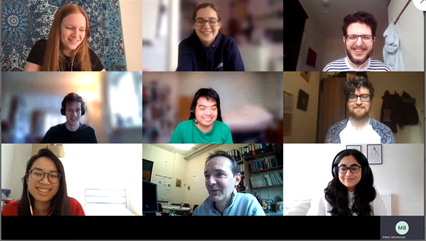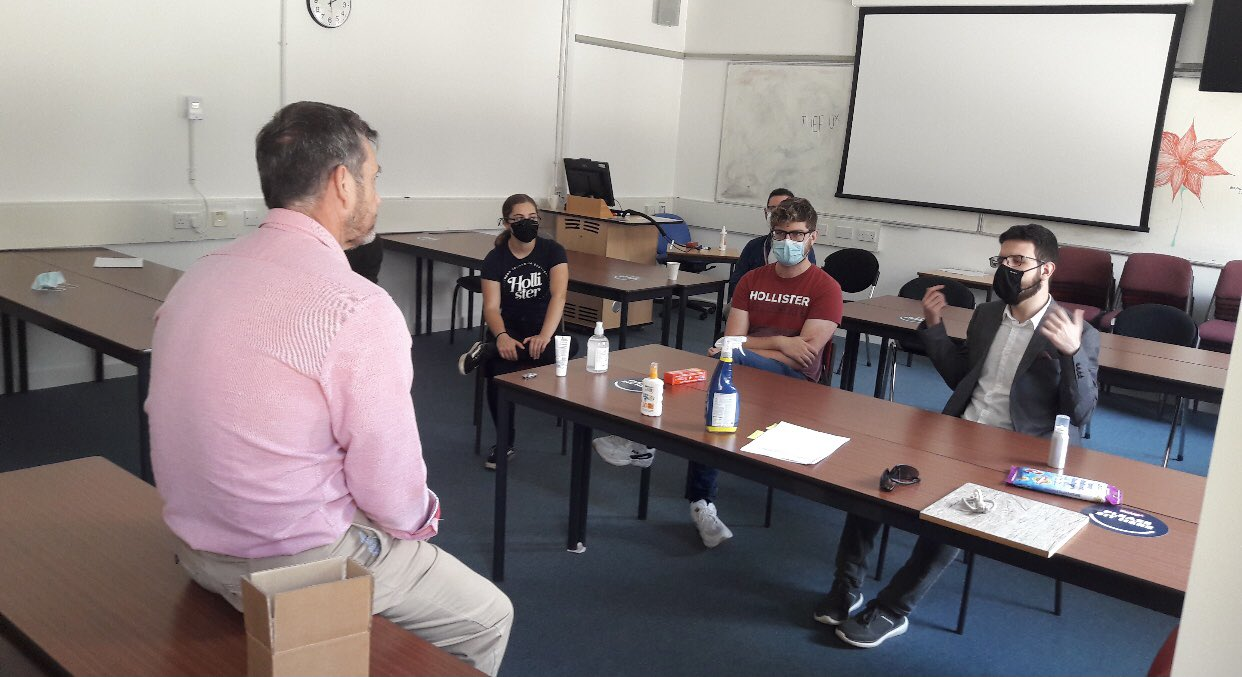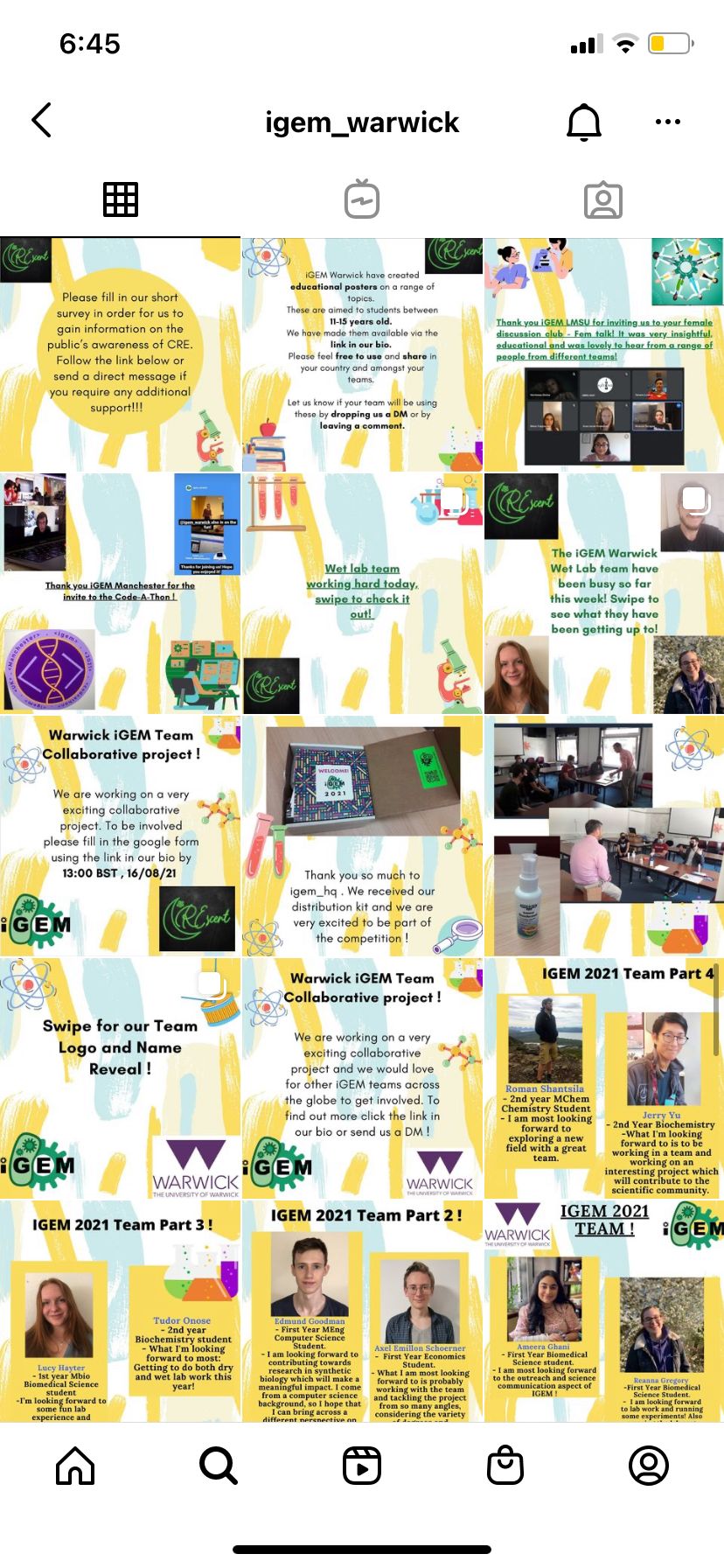Early February
We began by dividing into 3 groups so that we could look at different potential areas following a Microsoft team meeting where we all met each other (virtually). We looked into past IGEM projects, use of casein and the production of alternative dairy products, biosensors, and microplastics.
Late February
In our second teams meeting we discussed the research we found. One of our big concerns, which lead to the elimination of alternative dairy products as an idea, were the potential legal and ethical issues relating to a food product. Following the helpful advice from previous IGEM members we looked more into different tracks, what particularly interests us and explored what we might want to focus our project on in a broader sense. From here we found an interest in environmental field as well as that of diagnostics. Use of GFP was mentioned, along with plastic biodegradability.
Early March
In this meeting we were joined with Dr Christophe Corre and research fellow Emzo De Los Santos. We discussed GFP in plants as a detection tool for pathogens as a potential project idea. We also discussed the use of social media in communication and outreach as well as potential collaborations with societies. With the current situation in the pandemic, we quickly recognised the importance of using social media platforms to helps build relationships and connections across teams and organisations, and how this could help everyone in our respective projects.

A photo of our weekly catchup meeting on Microsoft teams
Late March
In late March we produced our first strong idea for our project – a product which could be sprayed onto a surface in a hospital and cause any disinfectant-resistant bacteria to fluoresce. After discussing this in our weekly meetings, the idea was liked by the whole team but after researching the idea, talking with professionals, and discussing our findings, we realised that this was not a major issue in hospitals when compared to antibiotic resistance. We also moved from a spray-based to a swab-based approach around this time.
Early April
After further research from break out groups and speaking to various health professionals (see our human practices page for more information) we came across a [Public Health England report about the concerning rise in CRE infections](https://assets.publishing.service.gov.uk/government/uploads/system/uploads/attachment_data/file/926563/Framework_of_actions_to_contain_CPE-draft.pdf.
Current detection methods for CRE require a lab and take 4-5 days for a sample to be processed. This can lead to large outbreaks in hospitals, due to a delay in results. We decided to think about how we could design a rapid detection method which would be used by cleaning staff without training, and which would eliminate the need for a lab. If Carbapenem resistant bacteria were present on a swab, the sample would fluoresce to indicate a positive result.
Late April
We started to plan who we might need to contact, in order to begin designing how this detection method might work. We contacted microbiologists and specialists within the University of Warwick to allow us to gain a better understanding of how to tackle this problem.
May
Dr Harrison is a specialist on Carbapenem resistance, who we contacted to learn about the best ways of targeting these bacteria. We were advised to look at broad spectrum detection, and the possibility of using specific phages of peptidoglycan layer tagging. We also learnt a lot about the importance of looking at the infectious dose, how Carbapenem resistance spreads, and issues surrounding biofilms
Early June
Dr Sagona is a phage therapy specialist who we contacted about the possibility of using phages. We discovered that this would likely be too specific, as we would only be able to target one strain of Carbapenem resistant bacteria. This would be of limited use in a hospital, due to the wide range of different Carbapenem resistant Enterobacteriaceae.
Late June
After reading extensively around the subject of CRE, we came across a gene called OXA-48, which we decided we would select as our target. This is because there are not currently any existing methods which can detect this gene either efficiently or quickly. If this gene was present in a bacterial cell, this would enable us to identify that the bacterium was resistant to Carbapenems. In our next weekly meeting, we also decided that we wanted to use a CRISPR-based approach in order to accurately identify the presence of this gene in an organism.
Early July
Dr Hastings is the Healthcare Regulatory and Technical Manager at Mirius, a company producing disinfectants and other cleaning solutions. He informed us of all the legal restrictions and regulations surrounding the use of biological products on humans, which was of great interest to us as it meant we moved away from designing a rapid detection method to diagnose patients, due to the many logistical difficulties. We instead decided a way of containing the spread of CRE by targeting reservoirs like sinks would be more achievable for us, and we would be able to do it more effectively.

A photo of our meeting with Richard Hastings
Late June
After meeting with Dr Hastings and talking to health professionals, concerns were raised about our product containing toxic chemicals. We originally intended to use malachite green as our method of fluorescence but realised this would not be safe to use in our product as it is a strong irritant. Therefore we adapted our detection method to use a combination of iSpinach, a safer RNA, and DFHBI, a harmless fluorophore, in order to produce fluorescence.
Late June
The use of living cells in our test kit also proved to be a safety concern. Therefore, we decided to change to a cell-free system, where living cells would be lysed, and our product would only contain the necessary components from these cells. This meant there was no risk of contamination, and we were able to adhere to safety regulations.
July
We met with Jack Lawrence, a member of the 2018 Warwick iGEM team, to discuss the use of CRISPR to detect Carbapenem resistance. This was an extremely productive meeting, as we designed the gRNAs we would use to allow the dCas9 protein to bind to our target gene (OXA-48) using NUPACK. Soon after, we had a second meeting where we designed the plasmids, we wanted to engineer to get this system working. We made a rough step-by-step plan of how we would achieve this in the lab. Once the correct parts had been ordered, we were ready to start in the lab and get the project underway!
March to September
From early March we decided to use social media to gain advice and knowledge on our project idea as well as use it as a platform to network with a range of iGEM teams globally. From June – August we had virtual meetups to discuss our project development and ideas with teams such as iGEM KCL, iGEM Mingdao, iGEM Stonybrook to name a few.

A picture of the Warwick 2021 iGEM Instagram feed
We gained useful insights into how to improve our wiki as well which direction to go in when working on human practices and the type of individuals we should contact which we acted on. Furthermore, through our social media pages we were able to be involved in many collaborative projects such as with McMaster iGEM team in June where we worked with them on an educational song to iGEM Aix Marseille in September for their emoji project game on Instagram where we shared details of our project on their social media platforms. Read more about this on our Communications page.